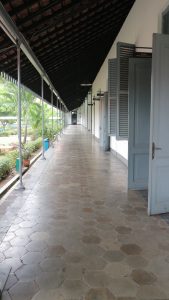On exhibition-making: Some thoughts and lingerings
by Grace Samboh

I have once used the analogy of junction to illustrate what exhibitions are, for me. A place where debate, friction, and even failure or undesired disturbances also occur.[1] The exhibition is indeed a place as it doesn’t exist without people, their stories, their baggage, and the interactions between everything —the space, the exhibited items, the makers, the attendees. I realized that this may well be a very different standpoint to Kusnadi, whose interview from the seventies was recently translated for our blog by Sally Texania, even though he was using a similar analogy, of a journey or movement. He wrote, “If artworks keep moving without a Display Hall that would be similar to us running but don’t know how to stop,” and, “A Display Hall is not the final destination.”[2] In Kusnadi’s time, when the state-owned and built infrastructure for temporary exhibitions was only the Jakarta Arts Center Taman Ismail Marzuki, the struggle seems to be about showing, exhibiting artists’ works in designated spaces so that the works can be staged in a respectful manner. The chosen wordings, Balai Pajang (Display Hall), also made it obvious. It is not that exhibitions never or rarely happened prior to that time, just that it used to happen in either artists homes, studios, or shared studios (where some people would be living there too).[3] To have a space that is solely meant to exhibit works liberates the works from domestic spaces along with its limitations. I guess it is fair to say that then, the exhibition happens when the works are presented in a decent space with certain respect.
By the early 2000s, the state had built quite many galleries and art centers, be it on a national or provincial level. Quite a number of commercial galleries have also been established. The designated spaces that Kusnadi was struggling for had somewhat become normal or a standard facility that a town would have. Almost automatically, these spaces cling to their routine, to what they understood as artworks and how it would be presented. These spaces limited themselves from the potential expansion of what exhibitions could become. The so-called domestic spaces came back into the league. They resurged along with the necessity to liberate works from demands of normalcy, standardization, or homogenization. Even with their limited resources, these domestic spaces, mostly run by artists or art-workers, allow diverse understanding and conception of art to be performed, exhibited and accessed by the public. As Ade Darmawan puts it, “[it’s part of] our practice to transform domestic spaces. We rent houses and transfer from house to house after turning them into a space that is more public. Consequently, we understand the term “public” differently than public institutions. We just open up spaces without calling them an ‘exhibition space’ or ‘residency space’, or boxing it in with such terms. Activities happen there.”[4]
Instead of seeing the two times as oppositional binaries, the seventies and the 2000s, with mindful-enough light, we could see it as an evolution —of the scene, of the practice, of the discipline, or, dare I say, of the industry. First one argues for space. Once it’s there, one fights for the quality of what is exhibited. Once that hits a stagnation, one makes their own spaces and challenges the existing ones. The junction analogy I proposed came to light in a setting where I had the luxury of options, at least of spaces in which the exhibitions that I am working on could be done. The state-owned facilities existed, commercial galleries were not impossible to work with, and so many artists-run spaces were already there. The options were really there. We simply needed to be mindful as to why, how, and for whom do we make exhibitions for.[5] I have always had the luxury of asking, what can exhibitions do? Why am I involved in making one? The answers are always different as they depend on when, where, to and with whom are these questions asked. What would always be there is other people’s presence, in all aspects of the processes. Therefore, I’d like to think that for exhibitions to really, actually happen, we are required to trust one another.[6] By ‘happen’, I mean prior to, during, and after the exhibition. And, by we, I mean the makers (artists, curators, researchers, writers, managers, organizers, etc) as well as the attendees —whatever role they are taking, from art audience, journalist, critic, student, etc.
In our current situation, do we need exhibitions? What kind of exhibitions should we be making?
As per early August 2021, Indonesia is not at its best in terms of dealing with the current pandemic. Especially Java and Bali, and Jakarta is in fact the center of the problem. Too many deaths, sufferings, and the fact that the sound of ambulances have somewhat been a constant soundscape of our mundane might sound simple in words, but it really is the reason. For convenience, let me repeat my questions here: In our current situation, do we need exhibitions? What kind of exhibitions should we be making?
In other circumstances, I found myself claiming that, in my practice, exhibitions are pauses from practice, from life, from constantly having to work (whatever industry it is that you are a part of).[7] Prior to the “work from home” situation, the pause that I am talking about is from the state of being in constant dialogue, be it with materials (mediums), stakeholders in one’s practice, neighbors, friends, other practitioners, other disciplines, etc. The exhibition is a place where all these elements may meet, reflect, think further or rethink, and carry on articulating whilst facing the issues that we are dealing with. In other words, the exhibition is not an end goal or final destination in our practices. But, those were the thoughts when uncertainties were (surely there, but) not as dominating as now.
With almost everyone that we spoke with towards the making of the biennale, I think we have always been frank. Earlier this year, we’d say that this might be the biennale without an international audience. One of our curatorial team members Qinyi Lim would sometimes, jokingly but also cautiously, say that she is not even sure that she’ll be with us in person during the installation, the opening, or anytime at all, as Singapore’s travel restrictions are tight. This also means that more than half of the artists that we are working with wouldn’t be able to make it to display their works, be in their works after installed, let alone experience the whole biennale bodily, spatially, in person. And, that the restrictions due to the pandemic situation is one that we will face together while still believing in the potentiality of ‘traditional’ exhibition as a place where people would meet with objects, works, practices, thoughts, ideas, and other people.[8]
Very early on, we all agreed in not making a virtual biennale nor virtual representation of the biennale. This decision did not come from an ignorant position of privilege that would ‘force’ people to just show up, at whatever cost. We would rather make an exhibition that we are familiar with, while mindfully crafting the interactions, connections, and communications between all us, the stakeholders, along the lines that we’d all still be able to make us feel safe despite the growing anxieties around us now. We would rather think about particular engagements that have potentials of lasting and growing relationships amongst all parties involved, even if it would mean dealing with a very small number of people, rather than to work with the abstract understanding of Jakartans being our audience. This familiarity, in terms of exhibition-making, is necessary not because we are against or afraid of experiments or the change to digital platforms, but it is due to our wanting to be responsible, accountable, and mindful in what we are doing in such a platform. However hard we try to critique-by-doing or challenge the archaic institutional understandings of a biennale, we do believe that it holds the responsibility of being an equitable event for all its stakeholders, including its public, its audiences.
And, indeed, the current pandemic situation has gotten us into thinking that it may only be us, the biennale’s closest circle of stakeholders that are living and working in Java (from organizers, supporting partners, to artists’ collaborators and their closest community), that will be able to be physically present in the exhibition. Surely things may change in the coming November, but, this really is where we are at, now…
Yet, to keep working is one way to maintain sanity. The fact that most of us are privileged enough to be able to work from home, to meet even through screens, is enough for us to be grateful and not to be an addition to the current problem faced by the medical workers around us, some of which are our dear friends and families. I feel that we are pursuing the exhibition-making aspect of the biennale simply to keep ourselves working, to keep making, to have something to look forward to, together. And, by together, I meant us the organizers, the artists as well as their collaborators, the particular groups that the artists are engaging as well as working with and for. To remain sane is not to dismiss the day-to-day grievances amongst our societies, the inequality caused by mismanaged or even ill-intentioned governments all over the world, the competitive ambience of life and living triggered by those numbers appearing on your screen on a daily basis, and cliches such as the grass that seems greener on the other sides. To remain sane, at this point in time, may simply be the ability to say that: It is okay to not be okay. It is okay to try to function by working, even only with (and for) a small amount of other people.
Notes:
[1] Bill Nguyễn & Grace Samboh, 2019. “On making an exhibition, together: A curatorial approach”, in the cataloguePollination #1 — We’re in this together. Ho Chi Minh City: The Factory Contemporary Arts Centre, p. 14-15.
[2] “Mengapa sebuah Balai Pajang” (Why a display hall?), in the weekly magazine Tempo, 11 September 1976.
[3] See: “Taman Lekra: Dari Galeri ke Galeri” (Lekra garden: From gallery to gallery), in Rhoma Dwi Aria Yuliantri & Muhidin M Dahlan, 2008. Lekra Tak Membakar Buku (Lekra Do Not Burn Books), Yogyakarta: Merekesumba, p. 298-311; and Sanggar – Museum – Galeri SENI RUPA di Yogyakarta (Studio – Museum – Galleries in Yogyakarta), Ed. 1, 1992. Yogyakarta: Taman Budaya Propinsi Daerah Istimewa Yogyakarta.
[4] Ade Darmawan is one of the persons who thinks, dwells, and mulls on this idea. Other than in several unpublished texts of his, we can also see excerpts of this train of thoughts in Ade Darmawan & Mirwan Andan (ruangrupa), “Extended Living Room: Space and conversation” in Curatography Issue 2, 2021, accessible here https://curatography.org/extended-living-room-space-and-conversation-conversation-by-ruangrupa/ or in many of the recent document 15 press statements such as this https://news.artnet.com/opinion/ruangrupa-the-collective-in-charge-of-the-next-documenta-reflect-on-what-it-means-to-curate-in-times-of-crisis-1878111
[5] The “we” here refers myself and the people I am working with for the different exhibitions.
[6] Ibid, Nguyễn & Samboh, 2019, p. 14-15.
[7] David Morris & Grace Samboh, “Why do it together when you can do it alone?”, a talk organized by the Lewisham Arthouse, London, in the context of an exhibition under the same title, June 15, 2019. See: https://piclondon.org/after-school-group-exhibition
[8] It is not with great pleasure that I use the word traditional, hence the quote marks. I feel even more incorrect to say ‘physical’ or ‘non-virtual’ exhibition, yet I couldn’t find a better phrase at this point in time.
